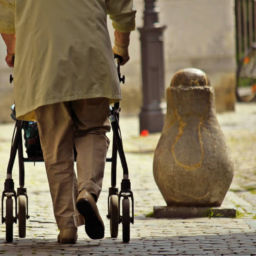
How to Choose and Use a Walking Cane
There are many types and styles of walking canes on the market that range from a handful of dollars up to one hundred dollars. Before considering the purchase of a cane you need to examine your need for one. Are you looking for one as an accessory with a minimal need for support or do you have a medical necessity for one? Let’s look at how to choose and use a walking cane for you or your loved one.
Consult Your Physician or Therapist
You should always work with your physician or therapist to determine which type of cane will work best for your situation and if a cane is the right mobility aid for you. Things you need to consider before purchasing a medical necessary cane include:
- is this a temporary situation while you recuperate?
- is your gait and balance good and you need minimal support?
- do you need extra support and need to lean on something for balance?
- do you have trouble gripping object?
- do you have weak wrists making it difficult to grip and maneuver objects?
- are you overweight and require a more sturdy solution?
- do you need your solution to be height adjustable?
Answering these questions can help your physician or therapist find the best solution for you.
If you have balance or grip issues, our physician or therapist may suggest a walker instead of a cane for your mobility needs. You can read our how to article on how to choose a walker if that turns out to be your best mobility solution.
Cane Materials
Canes are normally made of lightweight woods, aluminum or heavy duty steel. Canes that are made of lightweight wood are stylish, attractive and a good fit for those needing very minimal support and balance. Aluminum canes can be alternative to wood for greater durability and support and require less maintenance than wooden canes. Heavy duty steel canes are usually reserved for overweight people requiring extra support and stability.
Cane Types
There are several types of canes on the market, each one with a set of features to meet a specific need. Let’s take a look at the different types of canes.
Standard Crook Cane
This probably one of the most common cane types. It has a straight shaft with a slightly curved handle. The slight curve is easier to grip with a relaxed grasp that will help avoid cramping of the hand with extended use.
Aluminum Canes
This cane is similar to its wooden counterpart, but the shaft is made of lightweight aluminum. The handle may be slightly more curved for better gripping. While aluminum canes are quite light they can also support higher weights, up to 250 pounds.
Some of these canes may also be collapsible for easier portability and storage. You will need to evaluate whether this is necessary option as breaks in the solid shaft could contribute to stability and weight bearing capabilities if that is something required of your cane solution.
Orthopedic Canes
Orthopedic canes have a special grip that alleviate pressure solely placed on the wrist. Instead the grip is contoured to the shape of your palm where your weight can be evenly displaced over the palm of your hand instead of the palm. This type of grip can help avoid other medical conditions that can develop with extended use of regular crook canes.
Offset Handle Canes
Offset handle canes not only look different than traditional canes but are extremely durable and reliable for sustaining someone’s weight when walking. These canes usually have or can support a gel handle cover for extra grip ability. The offset handle is specially designed to hold heavier weights, some up to 500 pounds, which makes it a desirable mobility aid.
These canes with crooked necks are great for people who don’t have a lot of strength in their wrists. However, be aware offset handle canes designed for larger people, over 250 pounds, will be made of heavier steel and weigh abot three pounds compared to their one pound canes made of lighter aluminum. Some canes also come with an attached strap that allows for easier carrying.
Standard Offset Canes:
Bariatric Offset Canes:
Quad Canes
The first thing you will notice is tip of the cane has a four point base making it a more stable mobility solution for those needing additional support. A quad cane is a great solution for those needing additional stability or support when walking. These canes can also support greater weights making is a good solution for larger sized people, up to 500 pounds.
Be sure to take a careful look at your quad cane. Some quad canes have legs or spokes that radiate evenly from the bottom of the cane. Others have a plate at the tip with legs or spokes that radiate out either from the left or right of the cane making it a left or right hand cane. Of these canes most should have a means to rotate the cane shaft allowing you to switch the cane from a left to right hand support cane.
Some quad canes are also designated as a “convertible” quad cane. This means when your mobility solution improves or your hand/wrist strength increases you will be able to swap out the quad tip for a regular rubber tip.
Other Cane Items to Consider
Choosing which type of cane works best for you is important first step in addressing your mobility needs. However, there are a couple additional items to consider when choosing the cane(s). Let’s take a look at some of them.
Cane Tips
Do not skimp on the quality of your cane tips! This is the part of the cane that will support you on all types of surfaces and in all types of weather. Your tips should be made of thick rubber with grooves or circles on the bottom to create enough suction to hold the floor. Cane shafts vary in diameter so make sure your tips are made for the diameter of your cane. You need a snug fit and avoid them falling off during use.
You should also keep an extra set of cane tips on hand, especially if you rely on your cane every day. At some point with enough ground wear and pressure from your body weight, you cane will wear through your cane tip. You don’t want to be caught without a spare when you rely on your cane every day.
There are also some special cane tip attachments you can use if you live in snow or ice locations. There are ice spikes or prongs you can attach to your tips to keep you safe when walking around outside in inclement weather.
Here is a link to cane tips and specialty tips.
Adjust-ability
Some canes are non-adjustable with a one size fits all design. If you fit the average American size of 5’6″ to 5’10” then non-adjustable canes might work for you. However, if you are shorter or taller than average you will want an adjustable cane shaft.
Adjustable canes will have one or two metal pins that when depressed will allow you to move the shaft up or down to shorten or heighten the length of the cane. Always make sure you see and hear the pin(s) snap into place after making an adjustment. You don’t want your cane adjusting down while you are leaning on it during walking!
Collapsible Canes
Some canes are designed to be broken down to store in a pouch, large purse or backpack. Most break apart in three sections and reassemble by each section securely sliding into the previous section. There are mixed thoughts on the safety and use of split canes. If you do not place much weight on your cane and are not a heavier person then a collapsible cane might be a good fit for you. If you are a larger person you should stick with the solid steel design of a heavier cane.
Accessories
There are some accessories made for those who use canes. These include flashlights, gel grips, ice spike and prongs, hand straps, portable seats and pouches.
Here is a link to cane accessories.
How to Walk With a Cane
Most people walk incorrectly with a cane. Here is a helpful video that illustrates the correct way to walk with either a straight or quad cane.
Personal Experience With Canes
My wife is a large women, clinically defined as obese, who has mobility issues given her struggle with severe Lipo-Lymphedema and severe Osteoarthritis in both knees. She has both canes and a walker but prefers to use two (2) canes to get around. The bariatric walker definitely supports her needs better than the canes but trying to navigate through narrow hallways and doorways makes it difficult to use.
Instead my wife chose to use two bariatric canes (Medline Bariatric Cane) to give her the stability of her frame and weak knees that tend to slide in and out while walking. It also allows her to pivot and move in more narrow areas without sacrificing support. As with most canes, she is cautious when walking outside in rainy or wintry weather where concrete, asphalt, tile or wood surfaces can get very slippery. The heavy duty rubber tips do a very good job of gripping the ground but you still need to take it slow and be careful where and how you place your cane(s).
Summary
Canes are a great tool for those with minor mobility and balance issues. There are several styles and colors from which to choose. Do your research and consult your physician or therapist to ensure you get the right type for your needs. Check your cane regularly to make sure there are no cracks or breaks in the shaft or handle, your height adjustable pins are firmly in place and tips or quad bases have plenty of rubber for safe operation and replace when well worn.
Always consult with your physician or therapist should you experience pain in your hands or wrist during normal use of your cane. You may need to switch to another type of cane or even another type of mobility device that works best for your evolving situation.
We would love to hear your experience with cane(s) and if you have any additional information for others considering using a cane for their mobility issues.
To Your Improved Health…















































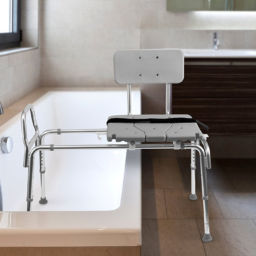

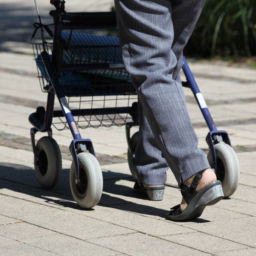
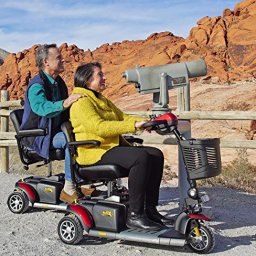
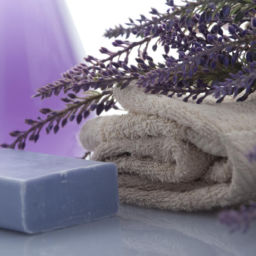

![How to Choose the Best Bath Chair or Transfer Bench [Buying Guide]](https://hallofcare.com/wp-content/uploads/2019/04/Gartner_Bath_Bench-256x256.jpg)

